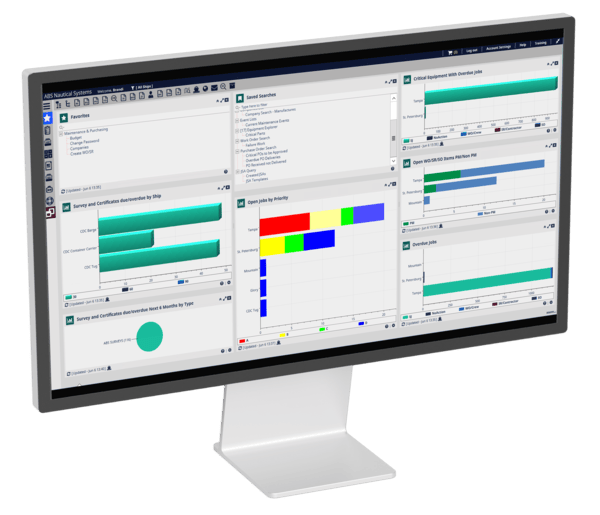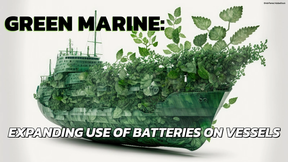Achieve Smarter Safety and Compliance with ABS Wavesight
Replacing manual systems with data-driven process and structure can promote a smarter approach to safety and compliance.
Vessel operators are focussed on reducing operating risk and achieving compliance with an increasing spectrum of regulations that support safety onboard ships. Beyond the baseline requirement, creating the conditions for safety is increasingly reliant on coordination of multiple sources of data, actions and responsibilities that result in the desired outcome.
This trend is becoming embedded in the maritime industry with the shift towards goal-based standards that create a higher dependence on data analysis. IMO regulations employing a risk-based approach are increasingly reflected in class requirements, providing a clear path away from manual processes and towards data-driven decision-making.
A growing body of regulation and industry guidance emphasizes how to manage the risk based on condition and an understanding of risk. This means adopting a proactive approach that transitions from discrete tasks with a high and inbuilt risk of failure to robust, data-driven events.
When the safety chain breaks, risk grows. The need therefore is for a smarter, stronger process that uses data to join stakeholders together. This is as true onboard the ship as it is in the fleet management control center.
For example, mooring line safety is not often top of mind but rather like other pieces of equipment, they gain attention when something goes wrong. Samson Rope’s Robin Collett told a recent industry conference that "a typical mooring line break releases the energy equivalent to a two-tonne vehicle hitting a wall at 220 km per hour" – more than enough to focus the attention.
The revision of SOLAS regulation II-1/3-8 and its associated guidelines by the IMO was undertaken to develop new guidelines for safe mooring operations for all ships in order to prevent unsafe and unhealthy work situations during mooring operations.
The amended SOLAS regulation entered into force on 1 January 2024 together with revised guidance on shipboard towing and mooring equipment.
Also published were further guidelines on the design of mooring arrangements and the selection of appropriate mooring equipment and fittings for safe mooring.
The industry continues to produce material guidance that helps vessel operators manage operational risks. One of the most important factors to consider is the mindset shift of how maintenance of such components is managed and how to get the correct information in front of the right people.
Effective compliance with the IMO rules on safe mooring is just one example. Any rule change or revision that puts a significant compliance burden on a vessel operator needs a solution employing data management to be effective. Data can be used to support practical experience and drive better decision making.
There are limited software options that can manage this process. Our conversations with clients tend to focus on the need to move these problems towards data-driven outcomes that tie into existing fleet management software.
A voyage management system should be capable of capturing and reporting enough information to support compliance without increasing risk.
By collecting data on an event-to-event basis such as mooring or unmooring, including all daily inputs such as weather conditions and likely stress on components that may affect performance, it is possible to present the operator with a risk-based approach to condition, required maintenance and likely replacement timescales.
Being able to tailor this data can mean that vessel operators have a simpler path to compliance and a clearer view on condition and the need for intervention.
ABS Wavesight Nautical Systems™ software can combine operational reporting features with technical management need and use workflow automation functionality to direct the required tasks to the responsible vessel team.

Figure 1: ABS Wavesight Nautical Systems enables comprehensive fleet and crew management to improve safety, asset reliability, regulatory compliance and workforce management.
With maritime regulations moving progressively away from subjective and prescriptive standards and towards a probabilistic, risk-based approach, asset owners, as well as managers and crews can leverage Nautical Systems to help make better decisions.
In the longer term, Nautical System’s ability to help implement condition monitoring remotely is an enabler of smarter, potentially remote inspection based on real time equipment quality. The ability to leverage inspection without manual intervention has benefits across the board, providing the conditions of safety are satisfied.
The chances are that many routines of this type are still being managed on spreadsheets. In an era when software can be leveraged to support safety and compliance in day-to-day maintenance planning, data driven decision-making makes sense.
A condition-based approach means vessel owners and operators can take timely action based on verifiable data. Building process and structure means that technology becomes an enabler for safety and compliance, rather than a complication.
Indeed, the decision not to adopt integrated systems means operators will increasingly struggle to demonstrate compliance with regulations. The opportunity brought by digital transformation is big enough that we have to ask; is the industry doing enough to adopt condition-based methods that enhance safety or will the regulators have to drive that, one resolution at a time?





